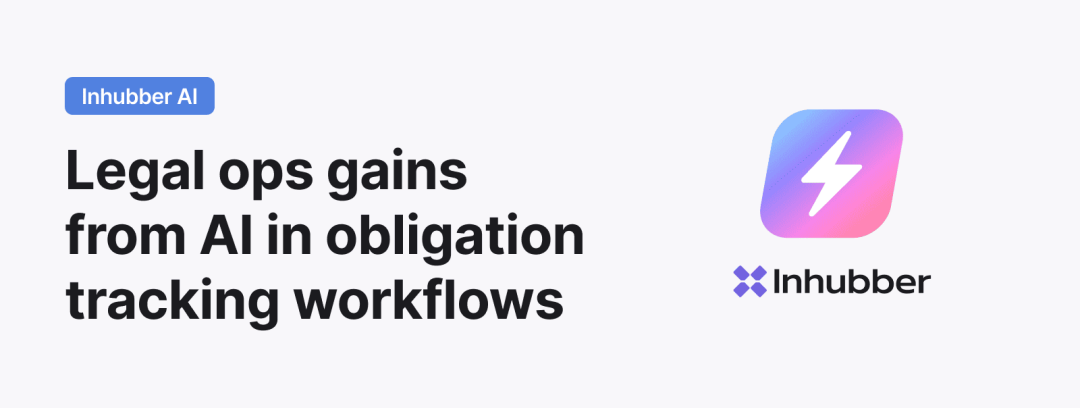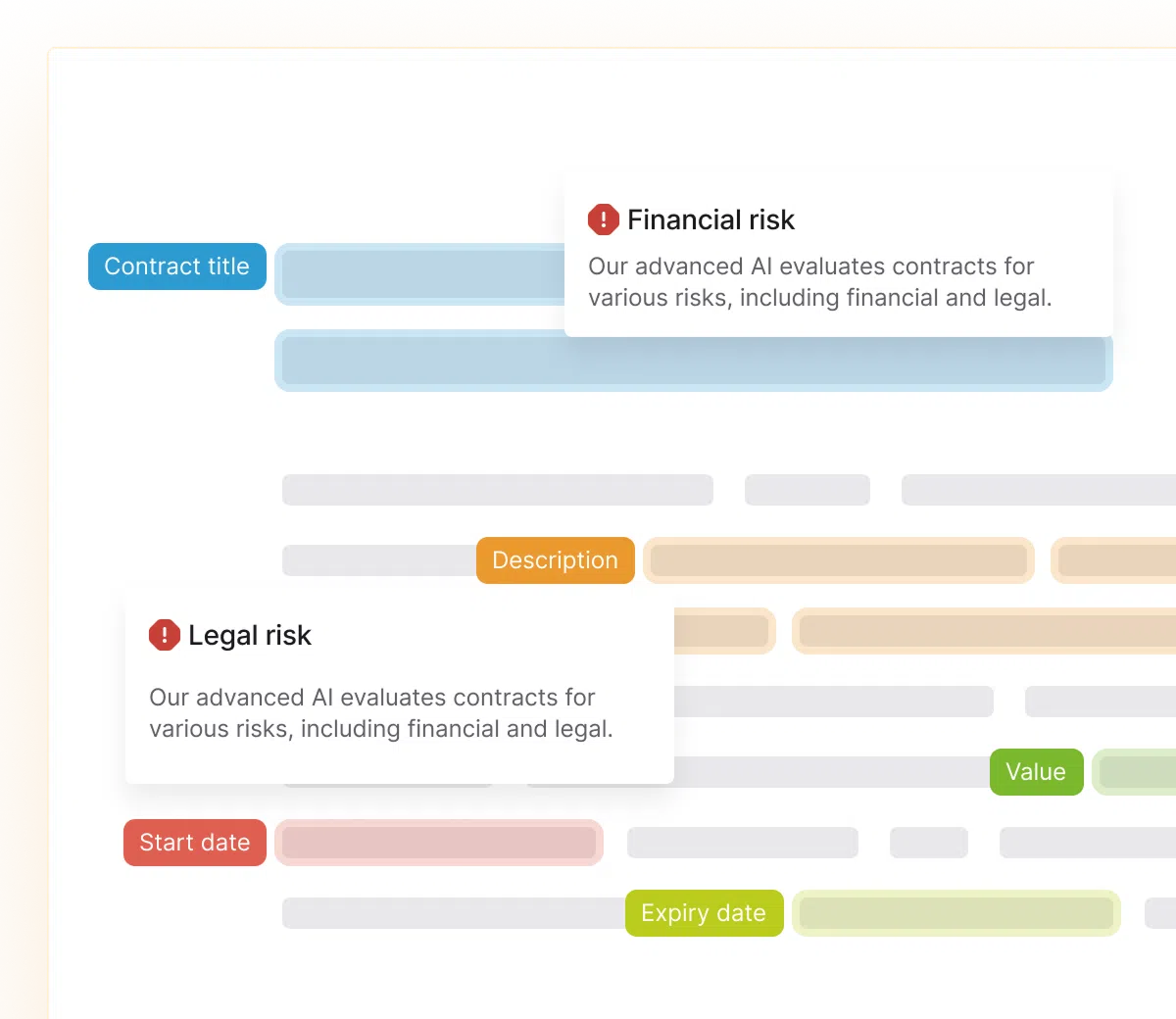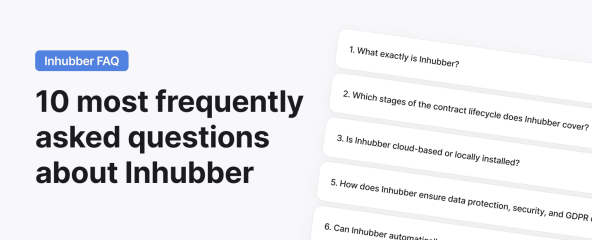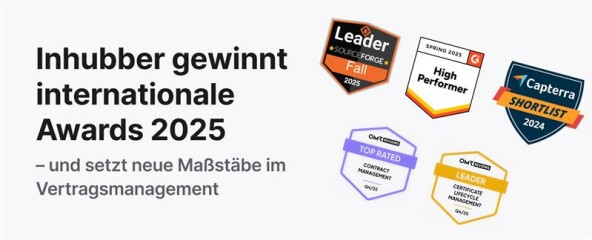
Imagine your legal ops team managing thousands of contracts with diverse obligations—renewals, performance metrics, audits, termination rights—all tracked in spreadsheets, emails or individual memory. One misstep, and the organization is locked into unwanted auto-renewals or triggers penalties. That’s the burden manual obligation tracking places on Legal Ops, especially as regulatory scrutiny intensifies.
Obligation tracking—detecting, assigning, and monitoring duties embedded in contracts and regulatory frameworks—is central to compliance, risk management, and financial protection. Yet manual systems simply struggle to keep pace. Enter AI-powered platforms like Inhubber’s legal contract management software, which turn that burdensome work into a streamlined, proactive, and strategic function for legal operations.
The traditional quagmire: the high cost of manual obligation tracking
Despite best efforts, traditional obligation tracking remains a labor-intensive, error-prone process that strains legal teams and exposes organizations to compliance risks. The cumulative cost of missed renewals, fragmented visibility, and administrative inefficiency erodes both value and confidence in legal operations.
Typical manual workflow (“the old way”):
- Scattered spreadsheets per contract or team
- Email chains and Slack threads reminding stakeholders
- Calendar alarms and manual task assignment
- Ad-hoc reconciliation and version confusion
Pain points (why manual fails at scale):
- High risk of human error: missed deadlines, non-compliance, and financial or reputational losses
- Resource drain: Legal and contract professionals spend time on tedious tasks
- Lack of visibility: no real-time, portfolio-wide snapshot of obligations
- Scalability issues: process becomes unmanageable as contract count and complexity rise
The net effect? Organizations suffer value leakage due to poor execution and process gaps. Legal teams are under pressure: leadership wants data, assurance, and insight—not form-filling.

The AI paradigm shift: automating insight from contract data (with Inhubber)
By embedding AI into contract workflows, platforms like Inhubber enable Legal Ops to “see through” unstructured contract text and convert it into actionable obligations.
Core AI enablers:
- Natural Language Processing (NLP): reads clauses, understands obligations, durations and exceptions
- Machine Learning (ML): learns from corrections, adapts to custom clause variants and improves extraction
How Inhubber applies AI to obligation workflows:
- Automated clause detection & extraction: Inhubber’s AI parses each contract to locate obligations—payments, deliverables, audit rights, confidentiality, termination, etc.—and maps each obligation to the relevant contract, clause, and stakeholder.
- Intelligent metadata tagging & structuring: Extracted obligations become structured fields (date, party, trigger, deliverables) in a searchable database linked to contract versions and amendment history.
- Dynamic alerting & workflow initiation: Inhubber transforms obligation dates into tasks, reminders, and escalations. When duty windows open, it triggers workflows and automatically notifies assigned owners.
- Risk-signal detection: The AI flags clauses that deviate from norms (for example, short notice windows, aggressive auto-renewal terms, high liability exposure) for review and mitigation.

Recent industry research indicates that the adoption of AI in legal operations is accelerating. For example, 80% of legal professionals view AI as a transformational force, according to the 2025 Thomson Reuters Institute Legal Department Operations Index. Add e-signature and workflow automation, and you have an integrated digital process that spans obligation capture through execution and renewal.
Quantifiable gains: the ROI of AI in obligation workflows (featuring Inhubber)
AI-driven obligation tracking delivers measurable improvements across efficiency, compliance, and cost containment. What once required days of manual review now takes minutes, freeing legal teams to focus on strategic decision-making rather than administrative oversight.
Key performance outcomes observed with AI adoption:
- Time savings: Automated extraction and tagging reduce contract review times by up to 60–70%.
- Compliance improvement: Real-time monitoring and reminders ensure that over 95% of obligations are completed before due dates, compared to less than 70% in manual tracking.
- Cost avoidance: By reducing missed renewals, late fees, and non-compliance penalties, AI-driven systems help recover material value previously lost to inefficiencies. Industry data shows that contract value leakage can be meaningfully reduced through automation and AI.
- Transparency and accountability: Stakeholders gain instant visibility into ownership, deadlines, and status across portfolios, reinforcing trust in legal operations.
Inhubber’s analytics dashboard transforms these metrics into actionable insights, enabling executives to visualize portfolio performance, identify recurring risk areas, and quantify the financial return on automation. This visibility enables legal departments to demonstrate tangible ROI—a critical factor as legal-tech budgets come under closer scrutiny.

Real-world example: rebuy’s digital transformation with Inhubber
One striking example of these gains can be seen at rebuy, a leading Berlin-based e-commerce company specializing in second-hand electronics. Facing rapid business growth and a rising number of contracts, rebuy struggled with decentralized storage, missed termination deadlines, and limited visibility across departments.
After implementing Inhubber’s centralized, AI-driven contract management platform, rebuy achieved a dramatic turnaround. All contracts were consolidated in one secure, cloud-based system, allowing the legal department instant access to every agreement. Automated deadline monitoring replaced manual Excel tracking, eliminating missed termination dates and saving the company thousands of euros annually.
Frank Kurzer, Head of the Legal Department at rebuy, describes the impact:
“The automatic deadline monitoring is a real game-changer for us. In the past, we managed deadlines manually in Excel spreadsheets, which was of course prone to errors. Now, Inhubber ensures that we are notified in time about upcoming termination deadlines. This has already saved us from unnecessary costs.”
Beyond cost savings, rebuy’s team reports higher transparency, smoother collaboration between departments, and faster document retrieval thanks to Inhubber’s intuitive search and flexible access rights. The company now plans to expand its use of Inhubber’s AI features to include automated risk analysis—continuing its journey toward proactive, data-driven contract management.
Implementation & path forward
Transitioning to AI-enabled obligation management doesn’t have to be disruptive. The most successful implementations follow a phased, collaborative model that strikes a balance between automation and oversight.
Step 1: Centralise and digitise contracts
Consolidate agreements from multiple repositories and upload them into a secure, searchable platform like Inhubber. Integrate existing contract management and e-signature workflows to ensure full lifecycle coverage—from contract creation to fulfillment of obligations.
Step 2: Configure AI models and workflows
Train Inhubber’s AI on organisation-specific templates, clause libraries, and risk thresholds. This contextual learning enables more precise extraction and risk detection as the system adapts to your internal language and compliance standards.
Step 3: Activate alerts and dashboards
Set up automated alerts for renewals, performance deliverables, and compliance deadlines. Use dashboards to monitor completion rates and track risk exposure across contract categories.
Step 4: Scale and optimise
As accuracy improves and users gain confidence, expand automation coverage to new contract types, departments, and regulatory domains. Inhubber’s self-learning models will continually refine their output, ensuring each cycle becomes more efficient and reliable.
Recently, many legal departments reported higher work volumes yet flat or declining budgets, making automation essential.
The future of legal operations: proactive, data-driven, and AI-empowered
According to IBISWorld data, the U.S. law firm industry expanded at an average annual growth rate of 2.2% from 2020 to 2025, indicating a steady need for legal expertise. By deploying AI, workflow automation, and e-signature tools, legal operations functions can move beyond simply tracking obligations to managing risk, uncovering value, and driving strategic outcomes. With a structured implementation and adoption, tools like Inhubber enable legal teams to transition from a cost centre to a value centre.
The evolution of obligation tracking illustrates the broader transformation underway in legal operations. With AI and the top artificial intelligence programs, what was once reactive and fragmented becomes predictive, integrated, and value-generating. Platforms like Inhubber show that artificial intelligence isn’t replacing human expertise—it’s amplifying it, enabling legal professionals to shift from administrative management to strategic governance.





